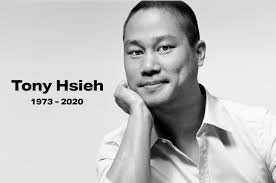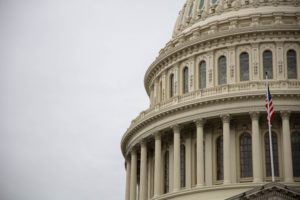Much coverage of Tony Hsieh’s legacy has been, deservedly, about his business success. After all, Tony’s incredible track record in leading Zappos has been hailed by corporate and leadership experts for creating a fanatical company culture passionately committed to teamwork and customer service in a way that powered sustained growth over his 21 year tenure as CEO.
Entrepreneurs everywhere revered Tony for staying true to his vision and values in how he did that. Notably, he was the only example we could point to as a super successful entrepreneur not being Amazon’d after being acquired by Jeff Bezos in 2009 for $1.2 billion.
But the story not being given much attention is how Tony’s vision and values pointed the company, and others, to join him in making a social impact with a private sector driven experiment for rebuilding the dead end Las Vegas neighborhood of Fremont East — resulting in a community movement he spawned known as the Downtown Project (DTP).
Zappos started in the Bay Area, but in 2004 moved headquarters to the Las Vegas suburban community of Henderson. The appeal for Zappos was driven by a lower cost structure to scale up the company’s primary teams of customer service, logistics and support workers needed to fill all those online orders.
As the company grew, employees spread across different buildings in a suburban business park and with even faster growth anticipated following Amazon’s acquisition, the forecasted needs for more space spurred planning for a corporate campus that would be supportive of the company’s quirky and purpose driven culture.
Instead of pursuing the conventional path of another suburban location, Tony chose to head into a decaying urban neighborhood believing that immersing his team on a mission of looking outward to build community around them would strengthen company culture and innovation, eventually leading to redefining Zappos company purpose as “Delivering Happiness” across their 4 C’s of Clothing, Customer Service, Culture, and Community.
Building Community
With that purpose in mind, as Tony explored urban Las Vegas he was struck by the long vacant and deteriorating former City Hall building and its surrounding neighborhood of Fremont East. So began the odyssey to bring about transformational change that his vision, and Zappos values, would drive to be a legacy extending far beyond the company itself.
How does one guy inject purpose, vision and values into a strategy for building community?
Following Zappos’ 2014 move into the awesomely renovated former City Hall building, Tony Hsieh described the strategy as being focused on scaling up efforts behind Downtown Project’s (DTP) own 3 C’s:
- Collisions: Serendipity that happens when people being in the right place at the right time result in starting of a new relationship that blossoms into downstream impact
- Co-learning: People in the community teaching each other — including mentoring and helping at a person to person level without necessarily a paid role
- Connectedness: The number and depth of connected relationships in the neighborhood
With this strategy, Tony and DTP’s private investors invested $200 million in real estate, $50 million in small businesses, $50 million in education, and $50 million in tech startups. The impact today includes 407 ongoing or completed construction projects, 61 small business investments and an estimated 130,000 annual visitors for the Life is Beautiful Festival and DTP-related entities.
More than the numbers, it’s the impact on life in Fremont East that can best be experienced by actually visiting there and talking with residents, many of whom have had their lives change as a direct result of the transformational change DTP had on the community.
Inspiring example for others
I had only been an occasional visitor to Las Vegas, not paying attention to the community. But as a Silicon Valley entrepreneur who boomeranged back to my Upstate New York hometown, I was on my own community building journey helping others start and grow companies in the newer industries across the downtrodden Upstate NY region.
Ever on the prowl for following innovators with similar goals, I started tracking news on DTP — particularly Tony’s thinking behind how engineering conditions could get more of the right people bumping into each other resulting in “creative collisions” that would ultimately lead to meaningful relationships entrepreneurs needed to find resources like mentors, investors, team members and customers.
That experience mapped directly to my own startup history beginning in the late 80’s as a rookie entrepreneur with zero relationships in the tech community. After some difficult initial struggles, it was the pivot towards targeting emerging tech that got me plugged into the openness and pay it forward nature of Silicon Valley. Those Silicon Valley creative collisions then led to my growing TriNet to what has evolved to become a NYSE listed company with $4 billion in annual revenues.
Along the course of that journey I relocated my family from Silicon Valley to my hometown in Upstate New York. By 2013, my non profit Upstate Venture Connect was in our third year of building a connected network across the state. We adopted a mantra of scaling up the volume and quality of creative collisions as a core strategy filter for choosing where we would put our energy and resources.
So I was elated to come across an Entrepreneurs’ Organization conference in Las Vegas with Tony keynoting on building community and an optional tour of the Downtown Project. Both were highly impactful for me, culminating with a debriefing in the DTP war room located in Tony’s apartment when he strolled in to chat with us fellow entrepreneurs and shared his personal insights “off stage” that gave us a true measure of the man he was.
In the years since, UVC’s community has grown to more than 16,000 people across our Upstate region, slowly evolving towards the connected community we envision. I recently published More Good Jobs, a book that shares that experience and outlines strategies for those who are trying to retain their city’s top talent. Yet in writing the book, I somehow missed mentioning Tony Hsieh. I’d been using the term creative collision so frequently over the last eight years that I even forgot to give attribution to Tony for both the concept and execution focus to make it work.
There was no bravado about his own role in creating DTP. Tony’s view was that it was all a community effort that he just helped bring together a few of the right people who were now making things happen.
Tony Hsieh’s story of the Downtown Project is rich and deserves to be told. Tony shouldn’t be remembered as just a renowned entrepreneur, but also as a community builder whose leadership continues to shape downtown Las Vegas and individual lives there.
Across America, there are lots of talent exporting cities with leaders looking for options on how they might do better at retaining their city’s top talent instead of watching the next generation move away in search of opportunities in the newer industries.
In hearing Tony’s story, who knows how many more people like me will be inspired to pick up where he left off. Orchestrating high impact creative collisions inside communities is one path Tony pioneered that can help us make a difference in impacting quality of life at scale.



